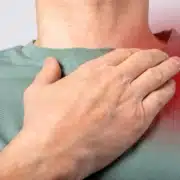Reverse Total Shoulder
Painful shoulder conditions, such as shoulder arthritis and rotator cuff tears, are common. Treatments like medications, physical therapy, and steroid injections can help, but sometimes a surgical option like a reverse total shoulder replacement is the best way to provide long-lasting pain relief. The first step to take is to get a proper diagnosis and the treatment that will most help you, and the place you can trust to get the best, is at the Colorado Center of Orthopaedic Excellence in Colorado Springs, Colorado. No one needs to live with shoulder pain.
OVERVIEW
As advanced technologies continue to evolve, there are now treatments for shoulder conditions that previously couldn’t be fixed. One of the fastest-growing segments of shoulder surgery is reverse total shoulder replacement. Reverse total shoulder replacements were originally designed in the 1980s in Europe. The Food and Drug Administration (FDA) approved their use in the U.S. in 2003. It is now estimated that approximately 80,000 reverse total shoulder replacements are performed each year in the U.S. Reverse total replacement surgery can be extremely beneficial for the right type of patient.
ABOUT THE SHOULDER
The human shoulder is the most mobile joint in the body. This mobility provides the upper extremity with a tremendous range of motion, such as adduction, abduction, flexion, extension, internal rotation, and external rotation. The three bones in the shoulder are the shoulder blade (scapula), collarbone (clavicle), and upper arm bone (humerus). The shoulder joint also called the glenohumeral joint, is formed where a ball (head) at the top of the humerus fits into a shallow cuplike socket (glenoid) in the scapula, allowing a wide range of movement. Because the socket of the shoulder is shallow, the joint relies on surrounding soft tissues to support it and hold the components in place. Many of these soft tissues surround the joint to form a protective capsule lined with a thin membrane called the synovium. The synovium produces a fluid (synovial fluid) to cushion and lubricate the joint. The shoulder joint allows one to complete tasks with the arm, like reaching for items on a tall shelf or throwing a ball.
WHAT IS A REVERSE TOTAL SHOULDER REPLACEMENT?
A reverse shoulder replacement is much like a traditional shoulder replacement in that both techniques involve replacing the natural degenerated bone and cartilage with plastic and metal components. This type of surgery is also called reverse arthroplasty. “Arthro” means joint, “plasty” means to mold surgically. It is called a reverse total shoulder arthroplasty because the ball and socket are “reversed” when the new joint is placed. The original socket is replaced with a metal ball, and the original ball is replaced with a highly engineered plastic socket. The new shoulder pieces will fit together like one’s natural shoulder. The new components allow the shoulder to move freely and pain-free. This special type of replacement surgery changes the biomechanics of the shoulder by allowing the deltoid muscle to stabilize and move the shoulder joint instead of the original rotator cuff muscles.
Read more about Reverse Total Shoulder Replacement on our new Colorado Springs Orthopedic News Site – Colorado Springs Orthopedic News. Schedule an appointment with a shoulder specialist today.







